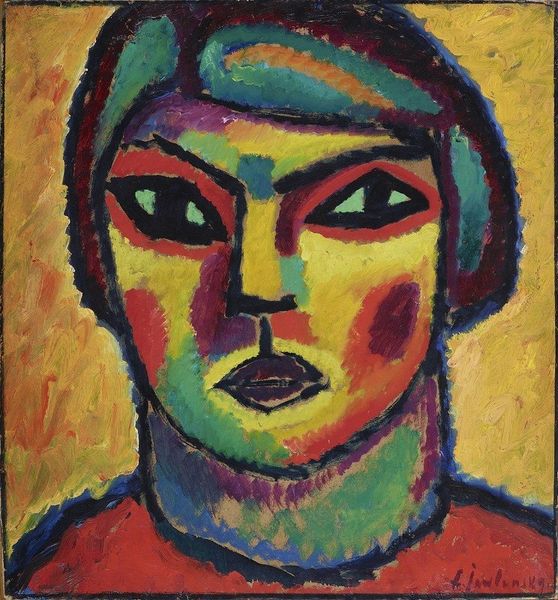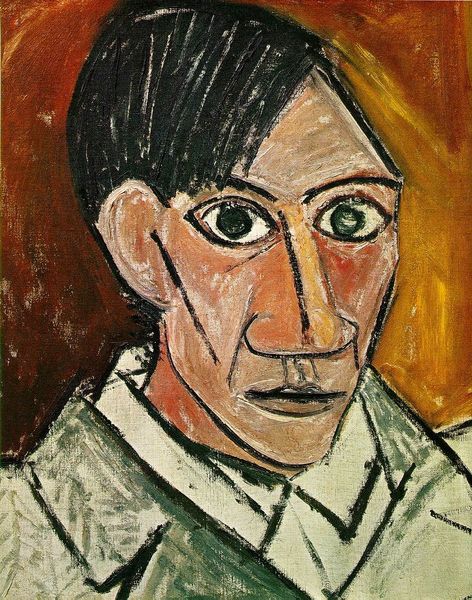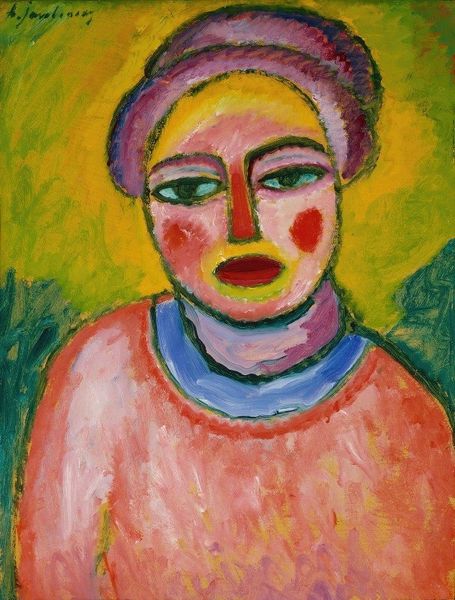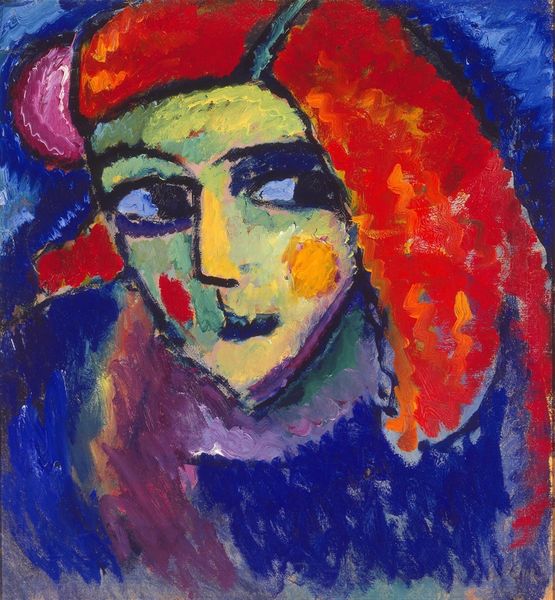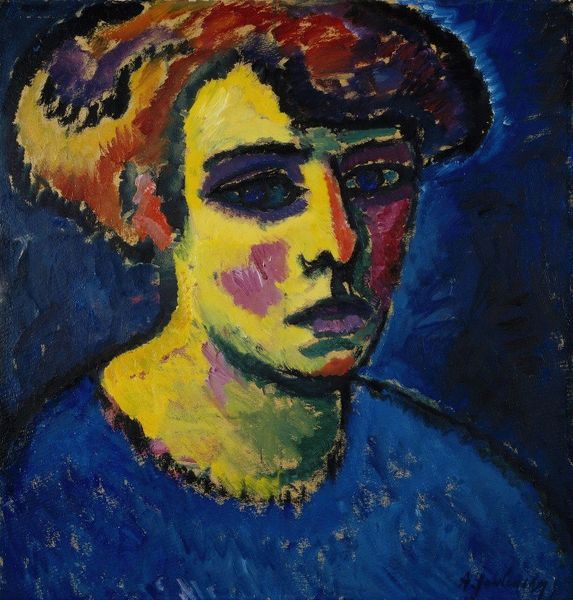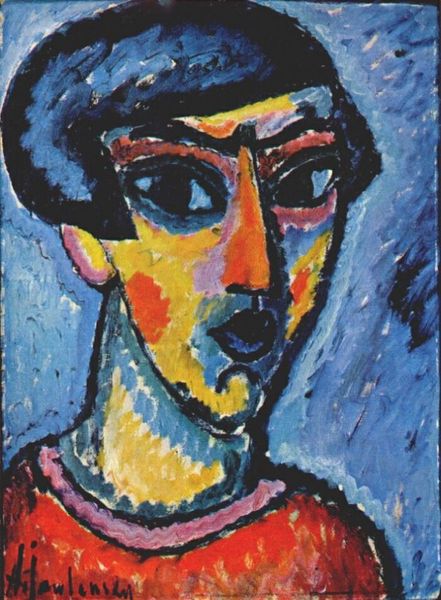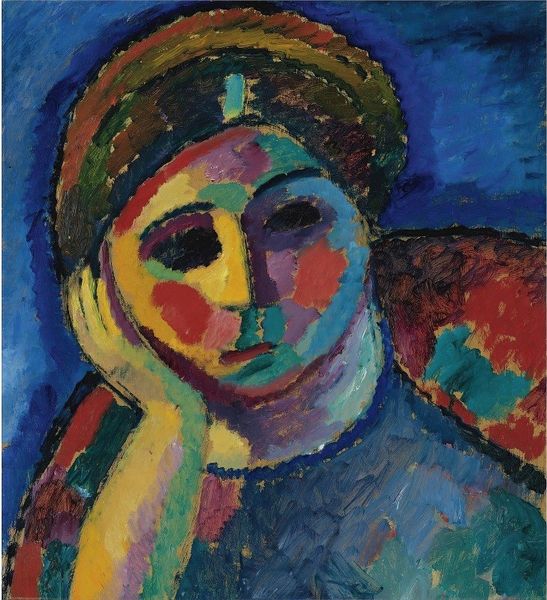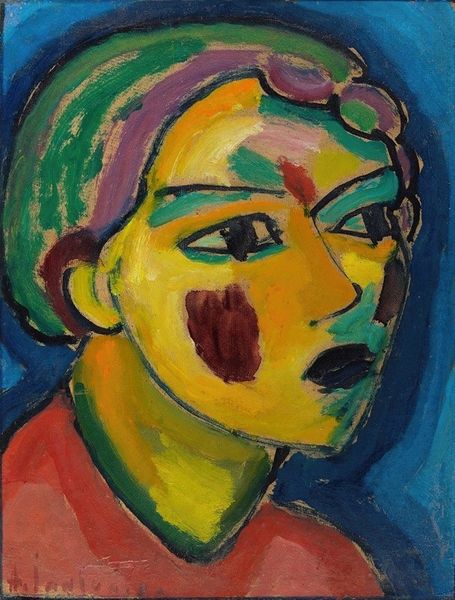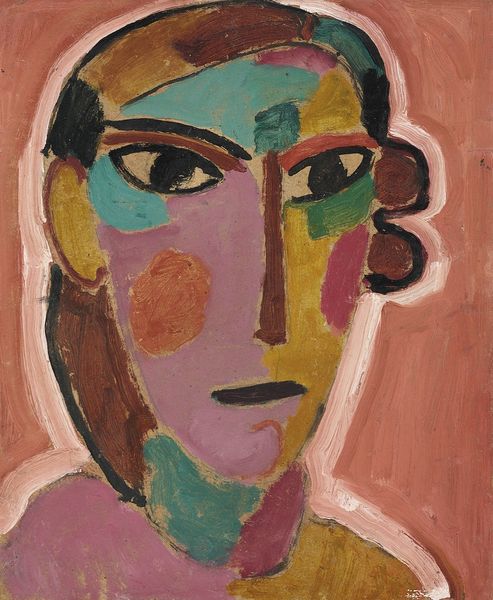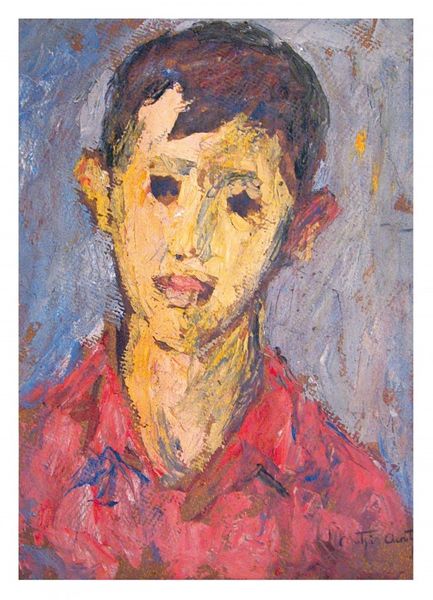
Copyright: Beauford Delaney,Fair Use
Curator: Here we have Beauford Delaney's "Self-Portrait" from 1944. Executed in oil paint, it presents a striking and somewhat unsettling image. Editor: Unsettling is the word! My immediate reaction is that this portrait vibrates with an almost frenetic energy. The colors are bold, even jarring, and the gaze is so intense. It's as if the artist is both present and hidden within the layers of paint. Curator: Absolutely. It’s crucial to consider the socio-political context of 1944. As an African American artist working during the war years, Delaney faced both external constraints and internal struggles regarding identity and representation. Editor: Precisely. I see this painting as an act of self-assertion, a refusal to be silenced or rendered invisible. The expressionistic style feels deliberately defiant, pushing against conventional portraiture to convey a deeper emotional truth. That intense, almost desperate look in the eyes speaks volumes. Curator: The layering of colors is significant. It moves beyond mere representation, right? You've got that cadmium red against the almost sickly yellow-green of the skin—a clash that certainly disrupts any sense of classical beauty. Delaney's position outside the art establishment allowed him to develop his own visual language. Editor: And the visible brushstrokes! Each stroke seems charged with emotion, contributing to the painting's overall sense of restless searching. I’m curious about that bright red cap—is it a statement of cultural pride, or a more personal emblem? Perhaps it represents a claiming of self at a historical time of societal suppression and alienation for so many people of color. Curator: Well, the role of Greenwich Village's artists, particularly during the Depression and war years, in providing spaces for creative expression shouldn't be underestimated, it allowed many works such as this to break into the public sphere. As a counterpoint, it can also be observed how such 'acceptance' was predicated on othering and difference in order to emphasize existing hierarchies of power. Editor: That makes a great deal of sense. It leaves me pondering the different layers of this artist and the layers of American Society too. This isn't simply a self-portrait. It's a bold, political act, etched in a rainbow of thick textured colour, one which holds a mirror up to a complex history. Curator: It certainly stays with you.
Comments
No comments
Be the first to comment and join the conversation on the ultimate creative platform.
